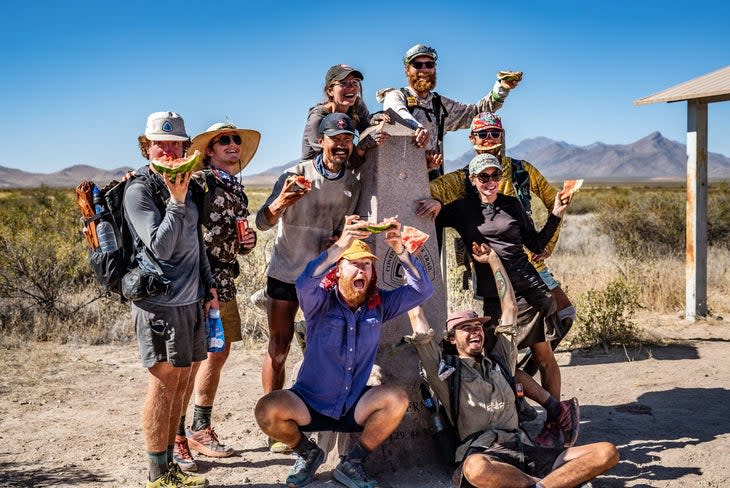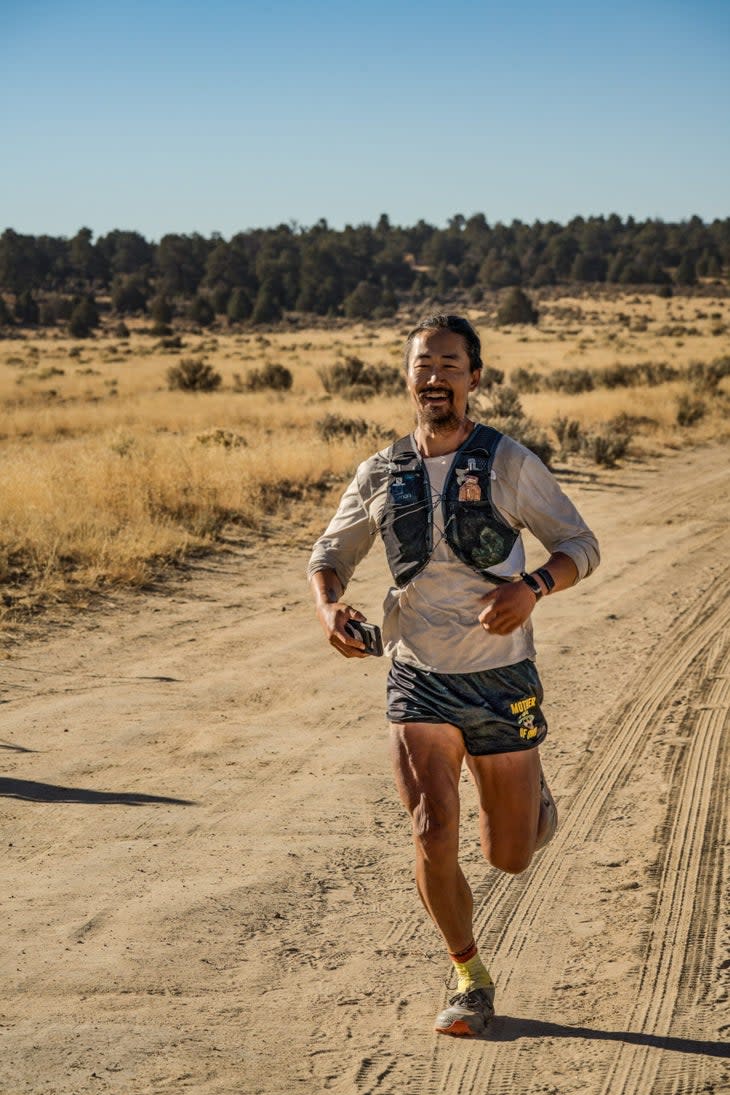Through Hiker to Ultra Winner: Jack Jones and the CDT
It was mile 85, and Jack Jones felt his lungs filling with fluid. Twenty-one miles remained, but his breathing was becoming labored.
"I could only draw short breaths and had coughing fits," he remembers.
His splits had been lengthening throughout the night, and there was a real possibility he would either DNF or second place would catch him. It only got colder, and Jack's stomach and pace worsened. The final 20 miles became a mental battle just to make it to the finish line. A mental battle on the same trail that he had just spent months thru-hiking.
Jones spent the summer of 2021 thru-hiking the 3,100 mile Continental Divide Trail. The route runs down the center of the U.S. from the Canadian border to Mexico. Two days after finishing the trail at the Mexican border, he was at the start line for the 106-mile Deadman Peaks Trail Race in Cuba, New Mexico. The perennial hiker and army veteran set his sights on running the race to put his body through an ultimate experiment: finding the relationship between thru-hiking and ultrarunning.
RELATED: CDT, Ultra-Style
"I’d always been curious to see how I’d fare in an ultra right after a thru-hike, and I hadn’t run a 100 miler yet," says Jones.
The initial plan was to finish the CDT with seven days to rest and transition to running before attempting his first 100-mile race. But he'd ended up changing his schedule so he could complete the CDT with the other hikers he had shared many miles with. He slowed down to a leisurely pace and saw his 100 miler grow closer and closer. On the brink of missing it entirely, the group finished the last 160 miles in four days. It left him only two days until the race.
Who would run an ultra right after a thru-hike?
Jones grew up in Springfield, Missouri, and served for six years in the military. After his service, he changed everything.

"I was very tired of 'real-life,' and I felt like I wasn’t living anymore, just going through the motions," says Jones. "I asked myself what I would do if I had all the money in the world, and the answer was I’d hike the Appalachian Trail. So 45 days later, I was on the trail at Springer Mountain."
The thru-hiking continued for most of the last four years, with the only major break coming in 2020, when Jones worked as part of a Hotshot Wildland Firefighting Crew.
Aweek before the ultra--on an off day in Silver City, New Mexico--he ran 26 miles to see how his body responded.
"It felt awful. That put a lot of doubt in my mind on whether I could finish the 100," says Jones. Even with lingering doubt, Jones -dubbed "Quadzilla" on the trail- was committed to racing.
The Race
Jones had a conservative race plan. He focused on slow, consistent miles from the start, forcing himself not to exceed 12-13 minutes per mile. Through the first 26 miles, he was in the middle of the pack. The plan to finish in one piece was working.
Then, the day heated up, the temperature rising into the high 70s. Shade was nonexistent. But, all those miles of hiking through the brutal New Mexico sun turned to Jones' advantage. By mile 44, he had moved into third place. His race plan was working seamlessly with the technical terrain and familiar climate. Simply finishing turned to a goal of finishing in the top five.
Jones continued to move up in the field, and power hiking the steep climbs proved to be his secret weapon. After months of climbing 6-8,000 feet per day with a heavy pack on, the hills felt easy with just a running vest. By the midpoint, he was in first place.
RELATED: The Long Lonesome: 38 Miles Per Day, 57 Days
Then, night came. The weather cooled significantly and Jones' pace slowed. Short gasping breaths were all he could manage, and his appetite vanished. He began to hallucinate and became paranoid about getting passed in the last miles of the race.
He adopted a rhythm of running until he struggled to breathe, then walking a few steps to regain composure. Forward progress became his only focus.

"To lose because I gave into discomfort was absolutely unacceptable. So, I gave it my all."
The sunrise illuminated the final climb, and soon Jones was shuffling down the final three miles of the course. Second place never appeared in his sights, and the victory in his first-ever 100 miler was solidified just two days after finishing the Continental Divide Trail.
How did thru-hiking aid in an ultramarathon?
In some ways, Jones feels the CDT perfectly prepared him for a solid showing in his first 100. He spent months hiking 10-12 hours a day with a full pack, and those endless miles of hiking were perfect for the later miles of the race. His sock and shoe choices had been solidified for months, so he had no foot issues or blisters during Deadman.
But the mental side of things is where he credits thru-hiking the most. The ability to remain present and focused proved easy, even when breathing issues, hallucinations and paranoia appeared. The familiarity with the terrain and moving mindfully over it had become second nature.
Jones also cited thru-hiking as great practice for consuming a tremendous amount of real food during the race. In a variety of ways, the ultramarathon proved very similar to a thru-hike.
The CDT prepared Jones to continue moving forward, accept the aches and pains and successfully win his first hundred-mile race. The skills he mastered through months of thru-hiking overcame a dramatic lack of running volume. His success in his first ultra has left him excited to attempt another, only next time, he says he'll do more traditional training.

